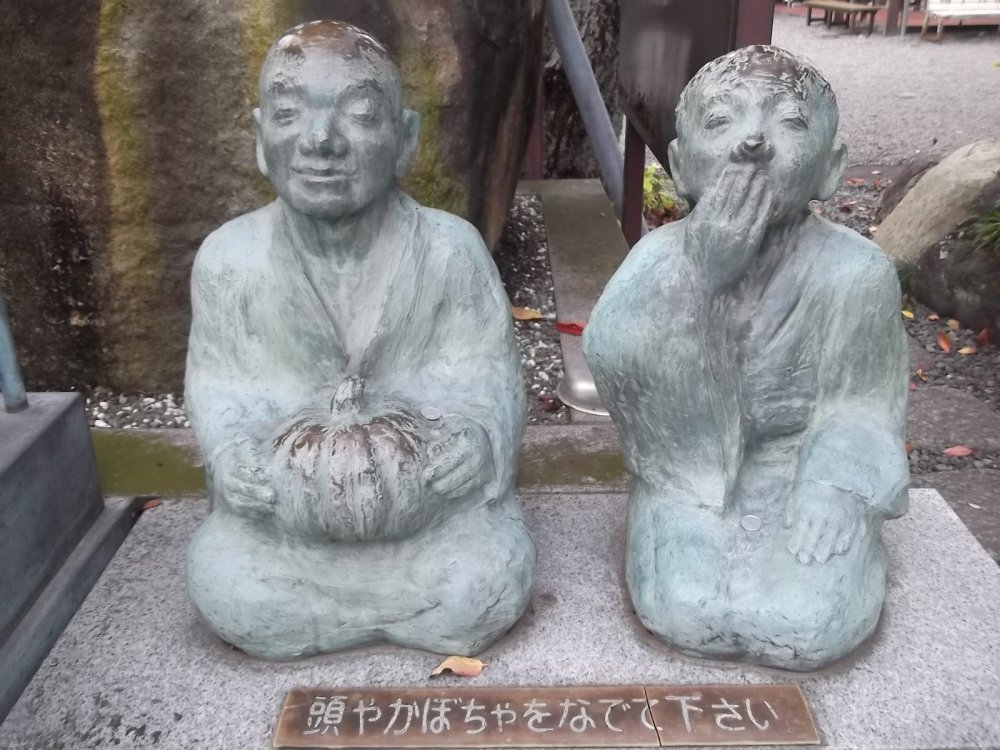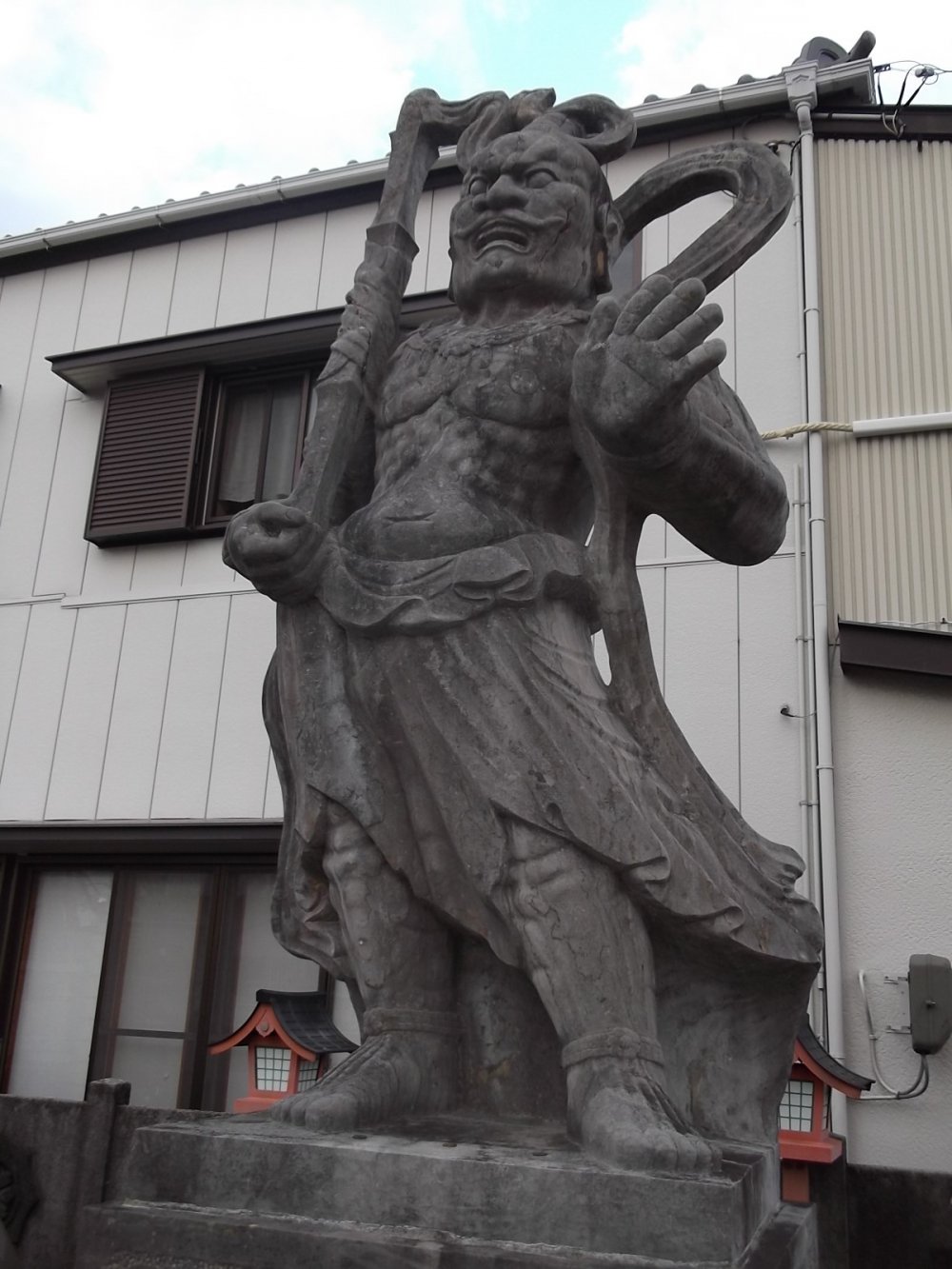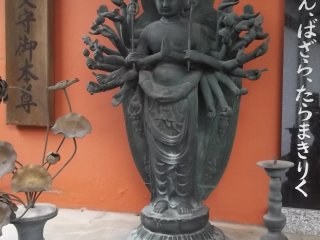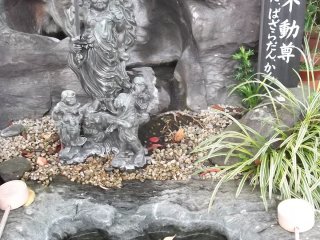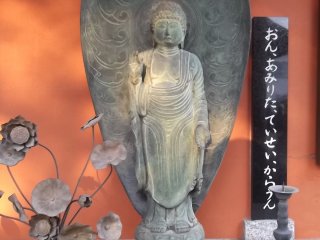These days Fujieda is a peaceful suburb to the west of Shizuoka city, but during the Edo era between 1603 and 1868 it served as a post town on the historical Tokaido highway between Edo (now Tokyo) and Kyoto. As a result it flourished commercially, with over thirty lodges for travelers, and the many shops and temples needed to serve them.
One of these temples is Narita-san Shingo-ji, sited prominently on the main road, which is notable for its diverse population of Buddhist statues. There are small statues and large ones, some made of stone, some of copper; there are many statues of Buddhist pilgrims, devotees, deities and saints, serene and peaceful, some outside and some under cover, with backgrounds and lotus plants worked in fine detail.
Some of the Buddhist deities outside were very impressive, but my favourites were the collection of small copper statues, kept under cover to the right of the worship hall. These were beautifully wrought and well preserved, and I could spend a few minutes with each, admiring the craftsmanship and detail.

